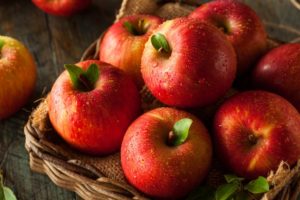Ever heard of food poisoning, Well it does not mean that food has been poisoned. But the food products produced with chemicals and pesticides carry deadly poisons. But, What about the food items that are already poisonous? Where many people get killed accidentally by eating the wrong plants. So, to make sure this never happens to you Top10 unknowns made a list of the most common poisonous things that we eat.
10 – Pufferfish
A few days ago we had a list of embarrassing deaths, one of which included death by eating the liver of a fugu (pufferfish).The fugu is so poisonous that in Japan, fugu chefs are trained specially for the job and are tested before being given certificates of practice. The training takes two or three years. In order to pass, the chef must answer a written test and then give a demonstration of his cutting abilities. The final part of the test involves the chef eating the pieces of fugu that he has cut. Only 30% of apprentices pass the test – which is not to say that the rest die by eating their fugu – they can fail in earlier parts of the test. Fugu is the only food officially illegal for the Emperor of Japan to eat – for his safety.
9 – Elderberry
Elderberry trees are very attractive and quite large. They are covered with thousands of tiny flowers which have a delicate scent. The flowers are used mainly for making elderflower liqueur and soda. Sometimes the flowers are eaten after being battered and deep-fried. But beneath the pretty surface lurks danger! The roots and some other parts of the elderberry tree are highly poisonous and will cause severe stomach problems. So next time you decide to pick some elderberry flowers for eating, be sure to eat just the flowers.
8 –Mushrooms
We have all heard of toadstools – and know that they are poisonous, but what many people don’t know is that a toadstool is actually a mushroom, not a separate type of plant. Toadstool is slang for “poisonous mushroom”. While there are some useful signs that a mushroom is poisonous, they are not consistent and all mushrooms of unknown origin should be considered dangerous to eat. Some of the things you can look for to try to determine whether a mushroom is poisonous are: it should have a flat cap with no bumps, it should have pink or black gills (poisonous mushrooms often have white gills), and the gills should stay attached to the cap (not the stalk) if you pull it off. But remember, while this is generally true of many types of mushroom, it is not always true.
7 –Almonds
Almonds are one of the most useful and wonderful of seeds (it is not a nut as many people would have you believe).It has a unique taste and its excellent suitability for use in cooking have made it one of the most popular ingredients in pastry kitchens for centuries. The most flavorsome almonds are bitter almonds (as opposed to “sweet” almonds). They have the strongest scent and are the most popular in many countries. But there is one problem: they are full of cyanide. Before consumption, bitter almonds must be processed to remove the poison. Despite this requirement, some countries make the sale of bitter almonds illegal.
6 – Castor Oil
Castor oil, the bane of many of our childhoods, is regularly added to candies, chocolate, and other foods. Furthermore, many people still consume a small amount daily or force it on their unwilling children. Fortunately the castor oil we buy is carefully prepared, because the castor bean is so deadly, that it takes just one bean to kill a human, and four to kill a horse.The poison is ricin, which is so toxic that workers who collect the seeds have strict safety guidelines to prevent accidental death. Despite this, many people working in the fields gathering the seeds suffer terrible side-effects.
5 –Cherries
Cherries are a very popular fruit – used in cooking, liqueur production, or eaten raw. They are from the same family as plums, apricots, and peaches. All of the previously mentioned fruits contain highly poisonous compounds in their leaves and seeds. Almonds are also a member of this family but they are the only fruit which is harvested especially for its seeds. When the seeds of cherries are crushed, chewed, or even slightly injured, they produce prussic acid (hydrogen cyanide). Next time you are eating cherries, remember not to suck on or chew the pip.
4 –Apples
Like the previous two items, apple seeds also contain cyanide – but obviously in much smaller doses. Apple seeds are very often eaten accidentally but you would need to chew and consume a fairly high number to get sick. There are not enough seeds in one apple to kill, but it is absolutely possible to eat enough to die. I recommend avoiding apple eating competitions! Incidentally, if you want to eat an apple and find a worm in it (and hopefully not half a worm), you can drop it in a bowl of salt water which will kill the worm.
3 –Tomatoes
First off, a little interesting trivia: in the US, thanks to a US Supreme Court decision in 1893, tomatoes are vegetables. In the rest of the world they are considered to be fruit (or more accurately, a berry). The reason for this decision was a tax on vegetables but not fruit. You may also be interested to know that technically, a tomato is an ovary. The leaves and stems of the tomato plant contain a chemical called “Glycoalkaloid” which causes extreme nervousness and stomach upsets. Despite this, they can be used in cooking to enhance flavor, but they must be removed before eating. Cooking in this way does not allow enough poison to seep out but can make a huge difference in taste. Finally, to enhance the flavor of tomatoes, sprinkle a little sugar on them. Now we just need to work out whether they are “toe-mah-toes” or “toe-may-toes”.
2 – Potatoes
Potatoes have appeared in our history books since their introduction to Europe in the 16th century. Unfortunately they appear largely due to crop failure and severe famine, but they will be forever the central vegetable of most western families daily diet. Potatoes (like tomatoes) contain poison in the stems and leaves – and even in the potato itself if left to turn green (the green is due to a high concentration of the glycoalkaloid poison). Potato poisoning is rare, but it does happen from time to time. Death normally comes after a period of weakness and confusion, followed by a coma. The majority of cases of death by potato in the last fifty years in the USA have been the result of eating green potatoes or drinking potato leaf tea.
1 – Rhubarb
Rhubarb is a very underrated plant – it produces some of the nicest tasting puddings and is incredibly easy to grow at home. Rhubarb is something of a wonder plant – in addition to an unknown poison in its leaves, they also contain a corrosive acid. If you mix the leaves with water and soda, it becomes even more potent. The stems are edible (and incredibly tasty) and the roots have been used for over 5,000 years as a laxitive and poop-softener.












